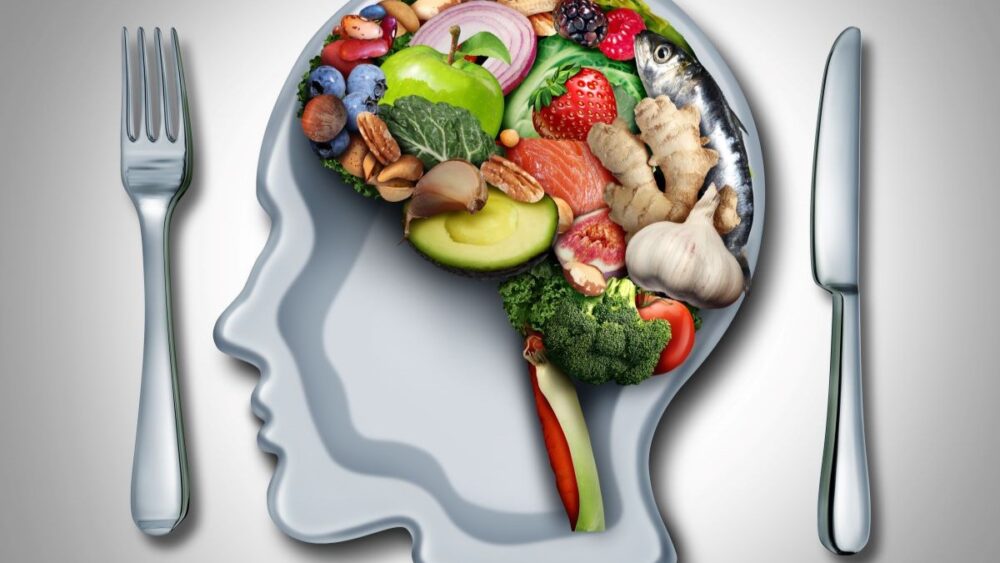Key Points:
- Mindful eating helps you enjoy your food, recognize when you’re full, and avoid overeating by staying present and aware during meals.
- Tips include sitting down to eat, turning off distractions, serving reasonable portions, and slowing down while chewing.
- By practicing mindful eating, you can navigate holiday temptations, reduce stress, and maintain healthy habits without feeling deprived.
The holiday season can be a magical time of year for many people. However, if you have diabetes or are managing your weight (or both!), it may also bring feelings of anxiety or dread. With an abundance of temptations — like candy, cookies, and alcohol — and increasing stress levels, it’s easy to find yourself indulging more often than you planned.
This behavior can lead to higher blood sugars and weight gain, creating a cycle that only amplifies stress.
Fortunately, you can break free from this cycle of stress eating — and even mindless eating — by embracing the practice of “mindful eating.” Keep reading to discover what mindful eating is and explore simple, effective tips to help you enjoy the holiday season with confidence and balance!
What is mindful eating and why does it matter?
Mindful eating is straightforward to understand. Think of a time when you ate an entire sleeve of cookies or polished off a pint of ice cream (perhaps while standing over the sink) and barely noticed what you were eating.
Maybe you were distracted by a television show or scrolling through social media. Or perhaps you were eating in response to emotions like sadness, anxiety, anger, or stress. This behavior, known as mindless eating, occurs when you’re not fully aware of or paying attention to your food intake.
Mindful eating is the opposite. It’s about being fully present while eating — paying attention to what and how much you eat, savoring each bite, and stopping when you feel comfortably full.
It’s also about practicing nonjudgment. For instance, if you notice that you’re eating too quickly or too much, you acknowledge it, pause to reflect, and move forward without self-criticism.
Mindful eating takes practice, but you can begin today with just a few simple steps to ease into this beneficial habit.
Mindful eating tips to get started
The tips below are designed to help you learn about and ease into mindful eating. You might find that some work better for you than others, and that’s perfectly fine. The goal is to create a strategy that feels right for you.
1. Think before you eat.
Take a moment to consider how you’re feeling. Are you truly hungry, or are you experiencing emotions like stress, fatigue, sadness, or boredom? If hunger isn’t the cause, explore whether there’s another way to address those feelings besides eating.
Learn more about dealing with fatigue: Feeling Fatigued? Here’s How to Fight It.
2. Sit down.
Avoid eating while standing or walking around. Instead, carve out time to sit down, ideally at a table. Eating on the go or while distracted makes it more likely that you’ll eat mindlessly, which can lead to consuming more than you intended.
3. Turn off the technology.
Yes, this means turning off the TV, your smartphone, tablet, or laptop. While technology offers many benefits, it can be a distraction during meals. The goal is to be fully present while you eat — enjoying your food and, if you’re dining with others, their company. Consider trying to eat in complete silence occasionally. If your mind starts to wander, gently refocus your attention on your food — how it looks, smells, feels, and tastes.
4. Serve out your food.
Instead of eating directly from a bag of chips or box of cookies, portion a reasonable amount into a small dish or onto a napkin. Otherwise, it’s easy to lose track of how much you’ve eaten — and before you know it, the bag or box may be empty.
5. Focus on how you eat.
Try counting how many times you chew each bite of food. The more you chew, the slower you’ll eat — and slowing down can help you recognize when you feel full. Keep in mind that it takes about 20 minutes for the feeling of fullness to register. If you finish your meal in 5 or 10 minutes, it’s harder to notice when you’ve had enough.
Another helpful technique is to put your fork or spoon down between bites. While these practices may feel a bit monotonous or even silly at first, they’re designed to help you become more aware of your eating habits.
6. Involve your whole body.
What does this mean? It means being fully present while you eat. Start by observing your food — look at it and take in its smell. When you take a bite, pay attention to how it tastes and feels in your mouth.
Also, listen to your body. Is your stomach rumbling because you’re genuinely hungry, or does it feel full, signaling that it’s time to stop? Even your posture matters — are you sitting up straight with your feet on the floor?
7. Practice gratitude.
Before you begin eating, take a moment to reflect on the time, effort, and labor that went into bringing your food to the table. During the holidays — despite the stress they may bring — it’s an ideal time to appreciate the farmers, truck drivers, factory workers, and chefs who play a role in providing your meal. Gratitude is linked to greater happiness and positive emotions, creating benefits for everyone involved!
Stay consistent with mindful eating practices
Practice makes perfect when it comes to mindful eating. It won’t happen overnight, so be patient with yourself and don’t give up! With consistent effort, you’ll soon find yourself eating mindfully with ease.
For more information on mindful eating, visit eatingmindfully.com.
Want to learn more about managing diabetes during the holidays? Read “Seven Holiday Self-Care Behaviors to Try Now,” “Navigating the Holidays With Diabetes,” and “Diabetes, Alcohol, and the Holidays.”





